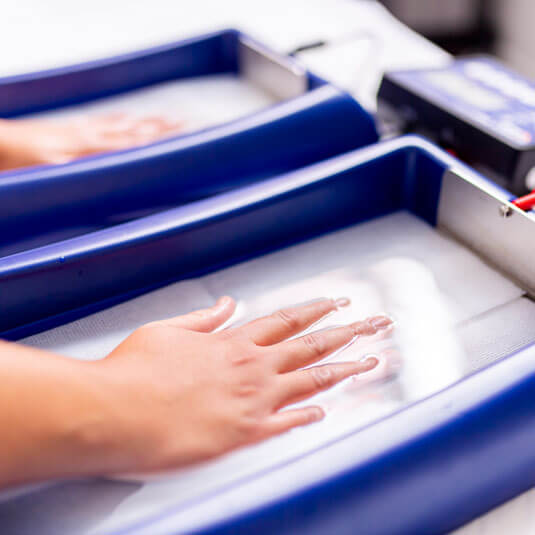How to Stop Sweaty Hands: Professional Dermatology Recommendations for Handling Excessive Sweating
How to Stop Sweaty Hands: Professional Dermatology Recommendations for Handling Excessive Sweating
Blog Article
Unveiling the Complexities of Excessive Sweating: A Comprehensive Guide to Medical Diagnosis and Management
Excessive sweating, medically called hyperhidrosis, is a problem that impacts a considerable variety of people and can have an extensive effect on their top quality of life. While sweating is a natural bodily feature, its overactivity in hyperhidrosis provides a special collection of challenges that usually go beyond plain pain. Recognizing the underlying causes, identifying the signs, and navigating the diagnostic process for hyperhidrosis can be complex jobs. In this thorough overview, we will discover the intricacies of hyperhidrosis, from its medical diagnosis to the array of therapy alternatives available, dropping light on efficient management techniques for those coming to grips with this problem.

Comprehending Hyperhidrosis Causes
Hyperhidrosis triggers can be credited to numerous variables such as genes, hormone inequalities, and specific medical problems. Genes play a significant duty in key focal hyperhidrosis, where individuals inherit the problem from their household participants. This sort of hyperhidrosis frequently shows up in particular locations like the hands, soles of the feet, underarms, and face. Hormonal inequalities, especially an overactive thyroid gland or menopausal modifications, can also activate excessive sweating. In addition, specific clinical problems such as diabetic issues, cardiovascular disease, and infections can result in secondary generalised hyperhidrosis. These underlying health and wellness concerns can interrupt the body's all-natural cooling system, causing the gland to become overactive. Understanding the source of hyperhidrosis is vital in identifying and successfully handling this condition. By identifying the specific factors contributing to too much sweating, healthcare providers can tailor treatment strategies to deal with the underlying reason, providing alleviation and enhancing the top quality of life for people influenced by hyperhidrosis.
Recognizing Hyperhidrosis Effects

Additionally, hyperhidrosis symptoms may materialize in emotional and social distress, as people may really feel ashamed or distressed about their sweating, bring about avoidance of social scenarios (Treatment for hyperhydrosis of hands and feet). In addition, repeated episodes of too much sweating can cause skin maceration, fungal infections, and a total reduction in self-confidence
Diagnostic Refine for Hyperhidrosis
Initiating the analysis process for excessive sweating involves complete assessment of the person's case history and health examination. Asking about the start, period, and triggers of sweating episodes is crucial to differentiate in between main focal hyperhidrosis and second generalized hyperhidrosis. Case history needs to likewise include questions about medications, medical conditions, and family members background of hyperhidrosis.
During the physical exam, specific focus is paid to the locations impacted by sweating. The doctor may analyze the degree of sweating, check for signs of underlying problems, and review the impact of sweating on the person's high quality of life. Additionally, certain tests like the gravimetric examination, starch-iodine test, or skin conductance measurements may be conducted to measure the amount of sweat created.
Moreover, in cases where additional hyperhidrosis is thought, extra tests such as blood tests, urine examinations, and imaging researches may be advised to identify the underlying source of too much sweating. The analysis procedure intends to properly identify the type and reason for hyperhidrosis to assist appropriate administration methods.
Therapy Alternatives for Hyperhidrosis
When addressing extreme sweating, numerous treatment alternatives are readily available to minimize symptoms and improve the person's lifestyle. The treatment strategy for hyperhidrosis relies on the seriousness of symptoms and the person's action to first therapies.
Topical therapies, such as aluminum-based antiperspirants, are often recommended as the very first line of defense for handling moderate cases of hyperhidrosis. These products function by plugging the sweat ducts, hence reducing the quantity of sweat that gets to the skin's surface. For people with a lot more serious signs and symptoms, dental drugs like anticholinergics may be prescribed to aid reduce sweating. Nevertheless, these medications can have negative effects and are not appropriate for everyone.

Effective Administration Methods
To successfully take care of hyperhidrosis, a personalized and comprehensive treatment plan customized to the person's specific needs and response to previous treatments is crucial. Iontophoresis, entailing the use of a reduced electrical existing to decrease sweat gland activity, can be valuable for both palmoplantar and axillary hyperhidrosis. A multidisciplinary method including dermatologists, key care doctors, and, if required, doctors, can maximize the management of hyperhidrosis.
Verdict
In conclusion, hyperhidrosis is a problem characterized by extreme sweating, which can significantly influence a person's high quality of life. By recognizing the causes, identifying the signs, and going through the diagnostic procedure, medical care providers can effectively handle this condition. Therapy options consist of topical medications, dental medications, injections, and also How to stop sweaty hands procedures in serious situations. With appropriate diagnosis and management methods, people dealing with hyperhidrosis can locate relief and boost their total wellness.
Excessive sweating, clinically known as hyperhidrosis, is a condition that influences a considerable number of individuals and can have an extensive influence on their quality of life. By determining the certain variables contributing to excessive sweating, healthcare companies can customize treatment strategies to address the underlying cause, providing relief and improving the quality of life for individuals influenced by hyperhidrosis.
Hyperhidrosis, identified by extreme sweating beyond what is essential for managing body temperature level, can dramatically influence a person's quality of life. Inquiring about the start, period, and triggers of sweating episodes is essential to set apart between key focal hyperhidrosis and second generalized hyperhidrosis. How to stop sweaty hands.In conclusion, hyperhidrosis is a problem identified by extreme sweating, which can considerably affect an individual's quality of life
Report this page